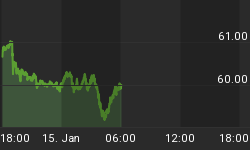Despite the current turmoil, US markets are holding up fine so far. Instead, European economic conditions are worsening. What will Ben do?
The Fed: Acting now or later?
This may be a crucial week for the US economy, as growth is fading and confidence declining. On a three-month moving average basis, retail sales growth (annualized) receded from 5.9% in March to 3.7% in May. On the other hand, initial claims increased again on June 9. The four-week moving average is now at 382,000, above the average of April and May. Growth is not powerful enough to create enough new jobs. The Fed is meeting again this week. Strong measures are necessary. What will Ben do this time? The best choice would be to wait for more signs of weakness before adopting QE3 (Quantitative Easing) or a further maturity extension program. In fact, the former would stimulate inflation, while the latter would not be beneficial with yields already so low.
The US has the capacity to overcome the challenges it faces. The housing market is stabilizing, although new highs could be seen within 3 to 5 years from the bottom (2009/10). Then, according to the history of cycles, the unemployment rate is expected to decline a few more ticks to 8%-7.8%, before resuming its long-term up-trend. However, all world economies are receding. China has cut interest rates for the first time since 2008. In India, growth was the slowest in nine years. Finally, in Brazil the economy has been going nowhere for a few months now. As a result, Mr. Bernanke, a student of the Great Depression, will probably be tempted to act sooner than later. Prices bottoming out in some sectors (stocks, gold, and the euro) seem to anticipate just that.
The ECB is ready to step in.
Last week, the Spanish 10-year bond yield increased to almost 7%, the highest level since 1999. The government of Mr. Rajoy was virtually forced to accept aid from the European Union to recapitalize the banks. The amount is still unknown, but it should be between EUR50 billion and EUR100 billion. Fears of contagion are mounting. Will Italy be next? Italian domestic demand collapsed in the first quarter of the year. In April, industrial production fell by more than 9% on a yearly basis. In just a few months, the Monti government has delivered more reforms than the usual political coalitionsad accomplished in many years. However, this is not enough. Growth must shortly follow. The ECB could help by reducing funding costs and providing liquidity. Italian politicians should do the rest.
Time is running out again. The whole euro zone is entering into recession. The composite PMI, a good indicator of GDP performance, slumped in May to its lowest level since 2009. Both services and manufacturing are declining. New orders are expected to contract for a few more months. So, the GDP could be below 0% this year. In April, German manufacturing production showed its deepest contraction (-2.4% month-to-month) since 2009. Under these dramatic conditions, the euro is holding up quite well. Against the U.S. dollar, it is testing an important resistance level at 1.27. A move above 1.2750 would take the market to 1.280. In effect, futures funds are massively short the currency, while commercial players are long the euro. What is left to sell when most professionals are already in the market?
















